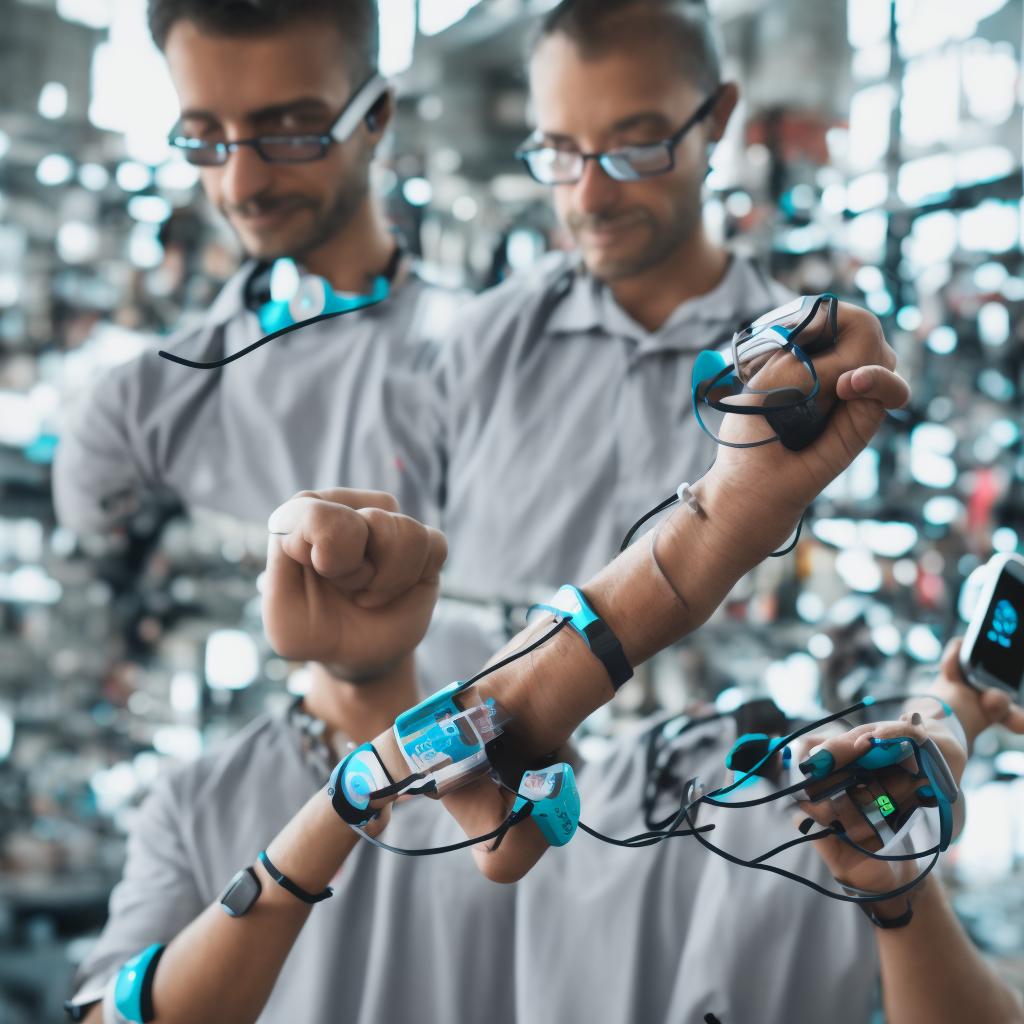The smart wearables market is going beyond mere fitness tracking and stepping into a new era of technology advancements. Wearable devices, once solely associated with monitoring our steps and heart rates, are now expanding their reach into more sophisticated realms. They’re becoming integral parts of our health care system, our daily communication, and even our personal safety. What’s driving this evolution? Let’s delve into the advancements pushing the boundaries of wearable technology.
Health Monitoring and Predictive Analysis
Healthcare is undoubtedly one of the areas that has seen the most significant impact from the rise of wearable tech. From continuous glucose monitors for diabetics to wearable ECG monitors, these devices are revolutionizing patient care.
Avez-vous vu cela : How Can Technology Support the Transition to Circular Economy Models?
The wearable healthcare devices of today are not just about tracking health data, they’re also about analyzing it. Predictive analysis is becoming increasingly prevalent in these devices, thanks to machine learning algorithms. This technology enables wearables to predict potential health issues before they become serious. For instance, some devices are now capable of detecting irregular heart patterns that could signify a potential heart problem.
Wearable technology is also making strides in mental health. Stress monitoring devices can detect changes in our heart rate variability, a key indicator of stress levels. They can alert users to take time out for relaxation or meditation to maintain their mental wellbeing.
En parallèle : How Are Augmented Reality and AI Transforming the Retail Customer Experience?
The Global Impact of Wearables in Sports
The sports world is another realm where wearable technology is making waves. Professional athletes and teams have been quick to adopt wearables to enhance performance and prevent injuries.
Advanced wearables are providing real-time data on an athlete’s performance, including heart rate, oxygen levels, and energy expenditure. This data is transforming how athletes train, allowing them to optimize their routines for maximum performance.
Wearable tech is also making sports safer. Devices that monitor impacts and collisions in contact sports are being used to detect potential concussions. This can help ensure that players receive immediate medical attention, preventing further injury.
In addition to professional sports, wearable devices are also encouraging everyday fitness enthusiasts to up their game. They’re providing insights into their fitness levels, encouraging them to push their limits and achieve their personal best.
The Role of Wearable Tech in Communication
Wearable tech is not just about health and sports, it’s also changing how we communicate. They are transforming into discreet, hands-free devices capable of receiving calls, texts, and notifications.
Smartwatches are leading the charge in this space, with capabilities far beyond telling time. They can read out texts, allow for voice commands, and even offer real-time translation services. This hands-free communication is proving particularly useful in situations where using a smartphone might be inconvenient or unsafe.
In addition to smartwatches, other wearable tech like smart glasses are also evolving. They’re offering features like augmented reality overlays and real-time information displays, changing the way we interact with the world around us.
The Future of Wearables: Personal Safety and More
While the wearable market is already diverse, it’s set to expand even further, moving into areas like personal safety and financial transactions.
Wearable safety devices are on the rise, designed to provide peace of mind in a variety of scenarios. For instance, some devices are equipped with fall detection, alerting emergency contacts if the user takes a hard fall. Others offer location tracking, ideal for keeping a protective eye on children or elderly relatives.
On the financial front, wearable tech is also breaking ground. Contactless payment technology is already a part of many smartwatches, enabling users to make purchases with a simple tap of their wrist. This not only offers convenience, but also provides a contact-free payment option, a feature that has gained significance in the current pandemic era.
In conclusion, wearable technology is evolving at a rapid pace, driven by innovations across various fields. From advanced health monitoring to hands-free communication, and from sports performance optimization to personal safety, the potential of wearables is truly limitless. Through these innovations, wearable devices are becoming more than just fitness trackers – they’re becoming an integral part of our daily lives.
Advanced Wearables and the Workplace
Stepping beyond the realm of health and fitness, wearable tech is making its mark in the professional sphere. Workplace productivity and safety are two major areas where wearable devices are showing potential.
As companies across the globe increasingly value employee wellness for its impact on productivity, wearable devices play a key role. Stress tracking devices, for example, can provide real-time insights into employee stress levels, enabling organizations to take proactive steps in promoting mental well-being in the workplace.
On the safety front, industries such as construction and manufacturing are harnessing wearable tech. Devices equipped with sensors can monitor environmental conditions and alert workers to potential hazards. For instance, if harmful gases are detected or if temperatures reach dangerous levels, immediate alerts can be delivered to the wearer.
Furthermore, smart glasses are making a splash in industries that require hands-free information. They can provide workers with real-time data and instructions, improving efficiency and accuracy. Augmented reality overlays can also offer visual guidance for complex tasks, enhancing precision in fields like surgery and aviation.
In a nutshell, wearable tech is shaping the future of work. As these devices continue to evolve, they have the potential to redefine productivity, safety, and efficiency in the workplace.
Impact on Market Growth and Share
The rapid evolution of wearable technology is driving significant market growth. According to a report by MarketsandMarkets, the global smart wearable market is expected to reach $87.6 billion by 2025. This surge is primarily driven by advancements in technology and the increasing acceptance of wearable devices in healthcare, sports, and the workplace.
North America holds the largest market share due to the high adoption rate of wearable tech. Tech-savvy consumers and the presence of key market players like Apple, Google, and Fitbit fuel this region’s dominance. However, the Asia-Pacific region is expected to witness significant growth, mainly due to increasing health awareness and the rising adoption of advanced technology.
The product category driving most of this growth is health monitoring devices. However, as wearable tech makes inroads into various other sectors, the market will likely see a more diverse product range, further propelling market growth.
In conclusion, the wearable technology market is set to expand rapidly, spurred by continuous innovation and increasing consumer acceptance. These devices are no longer just about fitness tracking – they’re changing how we communicate, work, and interact with the world. With endless potential for growth and application, the future of wearable tech looks promising and exciting.










